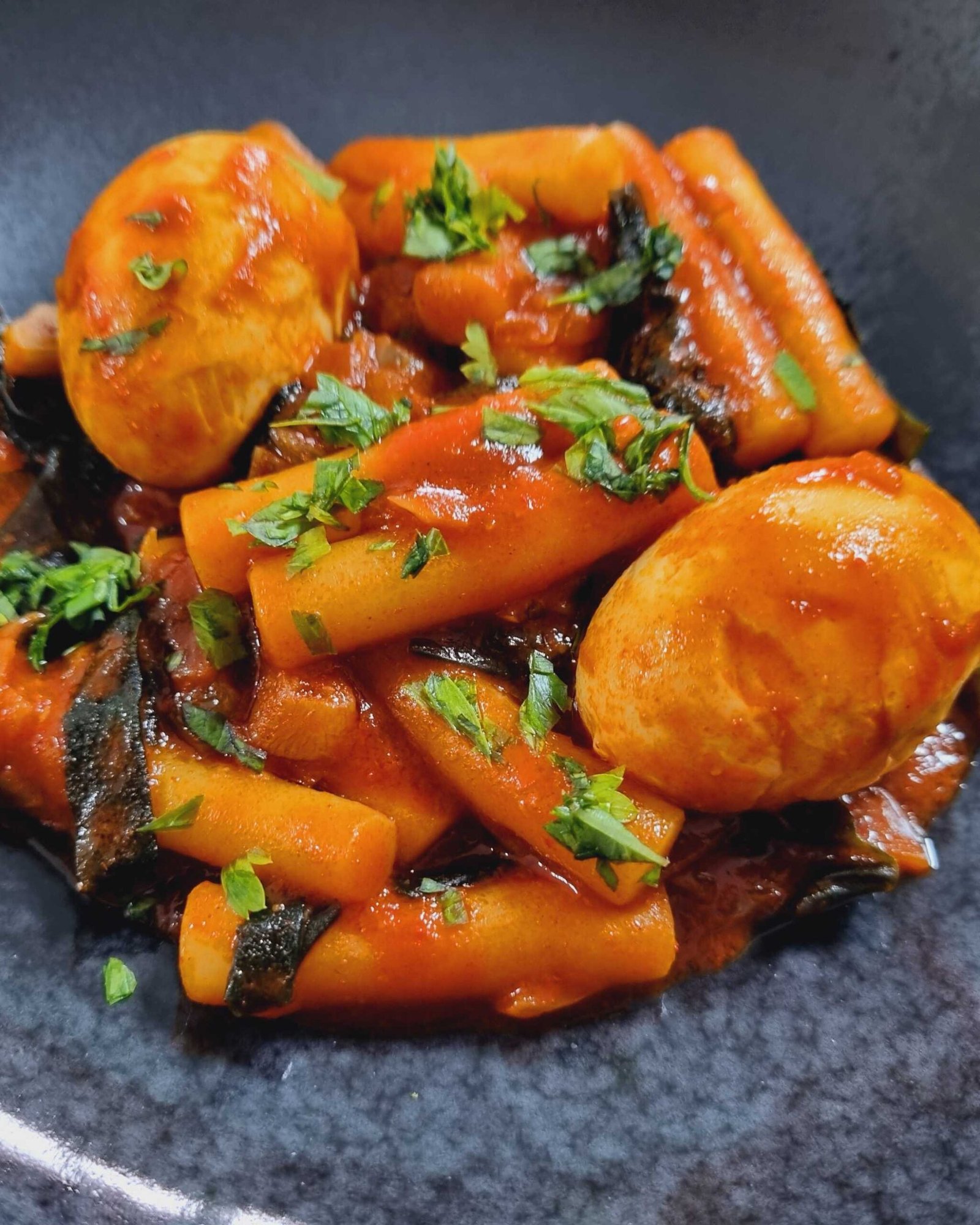
Newsletter Subscribe
Enter your email address below and subscribe to our newsletter

Enter your email address below and subscribe to our newsletter
South Korea has a rich and incredible culinary heritage. One of their most marvellous creations is Tteokbokkie. This dish is not only delicious, it is also satisfying, making it one of those must-try experiences to have for anyone who loves food.
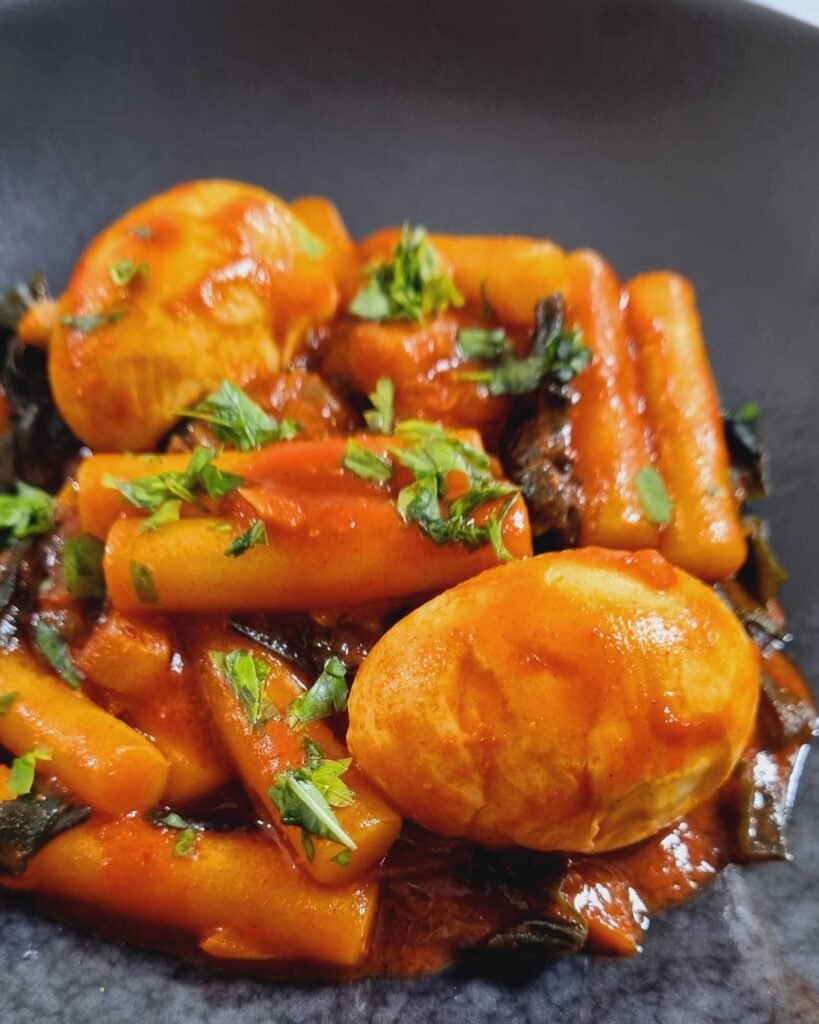
Rice cakes, known as tteok, hold a special place in South Korean history, and it’s easy to see why. Historically, they were primarily made on the sweeter side, showcasing the rich traditions of the past. Over time, a diverse range of tteok evolved to meet the tastes and needs of the Korean people. Eventually, savoury recipes were developed and one of the results was Spicy teokkbokkie. If you want a non-spicy variation of this dish, then you must try our fusion recipe called Gungjung Tteokbokkie.
Tteokbokkie is classified as Bunsik (분식), which means a quick snack food, but don’t let the word ‘snack’ fool you. This is quite a satisfying meal that will keep you satiated for some time. Oh, and in case you’re wondering, the other foods listed for Bunsik are kimbap, sundae, eomuk and ramyeon.
The Koreans are huge fans of Tteokbokki, they love eating and enjoying this dish with their family members. In fact, if you’ve been watching the popular mukbangers on youtube, you will have noticed this chewy rice cake adorned with a rich red gochuchang sauce.
Tteokbokki is made from white rice flour that is pounded into shape. Tteok is tender, bouncy, chewy and has a slight sweet taste. The main sauce for tteokbokki is a combination of condiments as well as seaweed, which gives the umami flavour for this dish. Gochujang and gochugaru will enhance the flavour of the tteokbokki by adding a spicy kick to it.
Did you know that the original tteokbokki did not start with gochujang as the base sauce. The root of the tteok dates back to Goryeo Dynasty (918-1392), when it was originally made as royal cuisine.
During that period, tteokbokki was known as Gungjung Tteokbokki, which means royal rice cake, made with soy sauce, sweet honey and various spices, creating a savoury and subtle sweet flavour.
The royal tteok was made with a plain and long rice cake, which was stir-fried with beef, vegetables and soy sauce. This original form of tteok was considered an exquisite and elegant meal that only the Royals could enjoy, but not anymore! 😂 Adding hot chili pepper to the traditional Korean cuisine became more prominent during the 17th century. By the early 20th century, the spicy version of tteok began to gain popularity.
After the Korean War (1950 -1953), Korea experienced a powerful transformation that led to rapid urbanization. The cities started to develop with new office buildings, apartment blocks and schools, creating a bustling environment. This led to the growth of the food and fish markets that are still present and operating to this day.
At these markets, there is a wide variety of ingredients and speciality foods that are affordable and accessible to the public. Many office workers and students visit these markets to enjoy the local cuisine. Priced as low as $5 and onwards. You can enjoy an incredible meal. One dish that you absolutely must try is tteokbokki, it is not only easy to cook but it also uses simple ingredients that you can find at most Asian Supermarkets. Plus, it is a satiating meal that you can enjoy during lunch or after a long day at work. Over time, Koreans began to add other inclusions to this dish such as boiled eggs and fish cakes.
Rice cake, onion, boiled eggs, salt. gochujang, soy sauce, garlic, gochugaru, sesame seed oil, tomato paste, brown sugar, parsley and basil leaves.
Rice cakes can be purchased at most Asian supermarkets. They can also be ordered from online sources. It comes in frozen form. You can also use rice cakes that have mozzarella in them, which would also be incredibly delicious in this dish. Onions and garlic add a savoury taste with a slight subtle sweetness. Gochujang is a Korean chili paste with a moderate heat that most people can handle, thanks to its unique composition.
It is made from a type of red pepper found only in South Korea. It is also fermented, which means it is suitable for your gut health. Gochugaru is a chili flake that forms the foundation of gochuchang. In this recipe, we’re using both gochugaru and gochuchang. Both of which can be found online and in many Asian supermarkets.
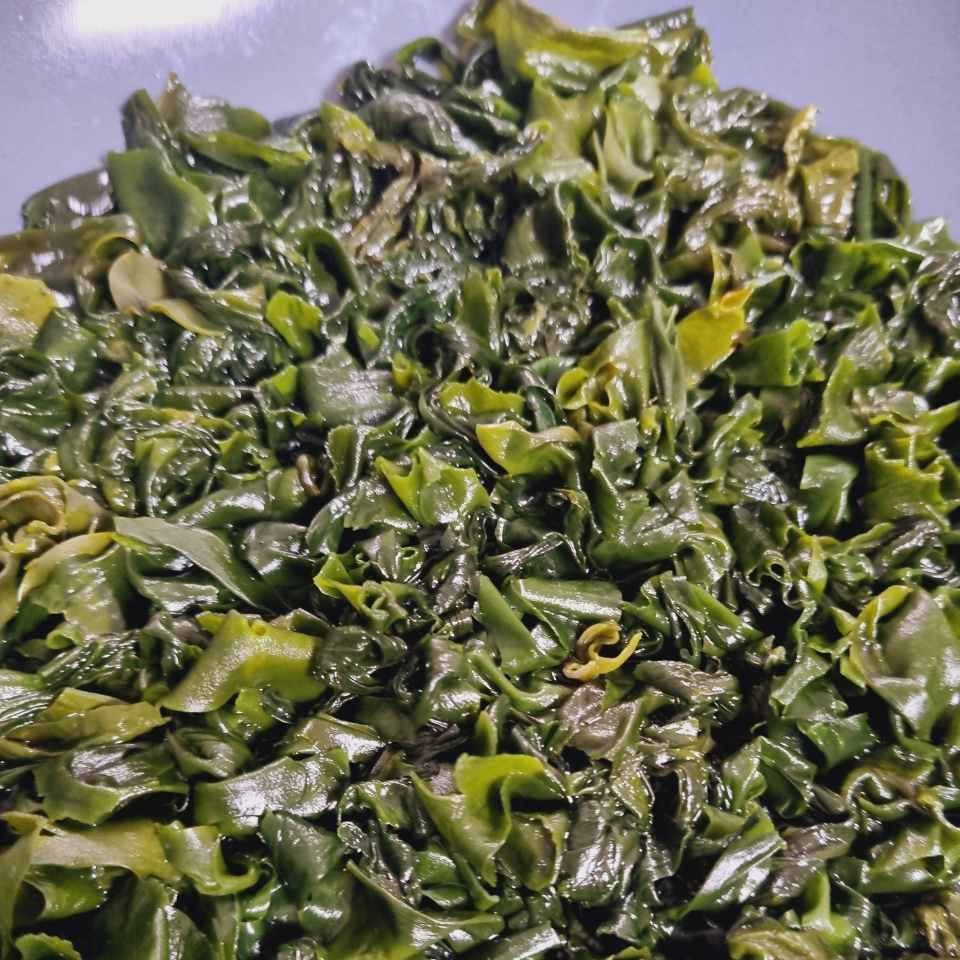
Sesame seed oil has a nutty taste. Tomato paste is used in place of ketchup; it gives this dish a robust and concentrated tomato flavor. Brown sugar adds a bit of sweetness. Parsley and Basil’s leaves are added as a garnish; it is optional and not traditionally used in the authentic dish. However, it does add a lovely fresh taste. The traditional version of tteokbokkie is made using an anchovy broth, which consists of soaking the seaweed with dried anchovies. We’ve chosen to use fish sauce in place of anchovy broth for this recipe; dried anchovies were not available. You can use whatever is available for you.
Remove the rice cakes from the freezer. It will take a few minutes to soften. Thinly slice the onions and garlic finely. Wash the parsley and basil leaves, finely chop and set aside.
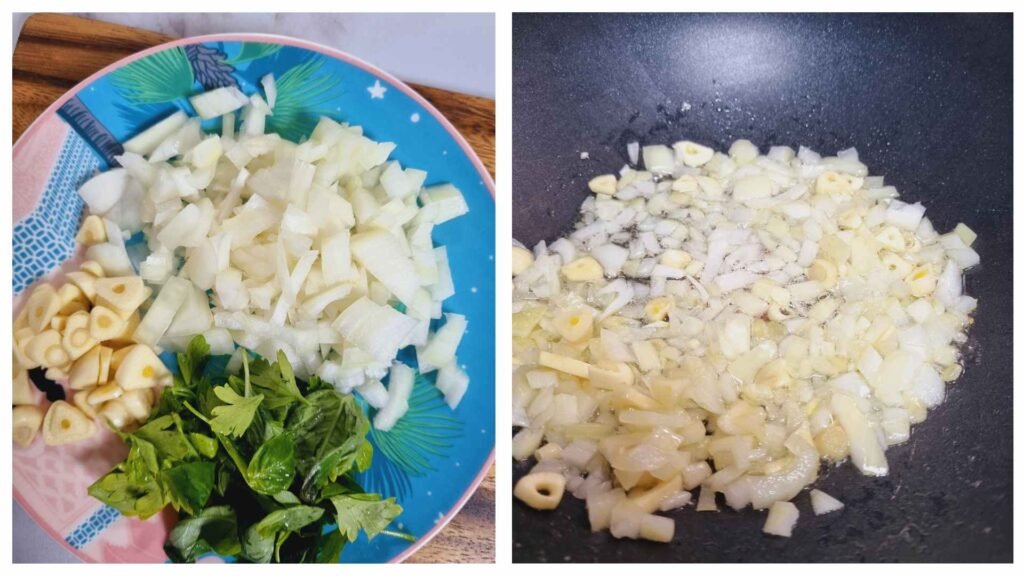
Add water to a pot and bring it to a boil. Add salt to the water and add six eggs. After 14 minutes, drain the water and peel the eggs under cold running water. Prepare a small bowl, add water and the seaweed. On a wok, add the garlic, onion and cooking oil on medium-low temperature for eight minutes. Sauté the onion and garlic until it caramelized and lightly browned.
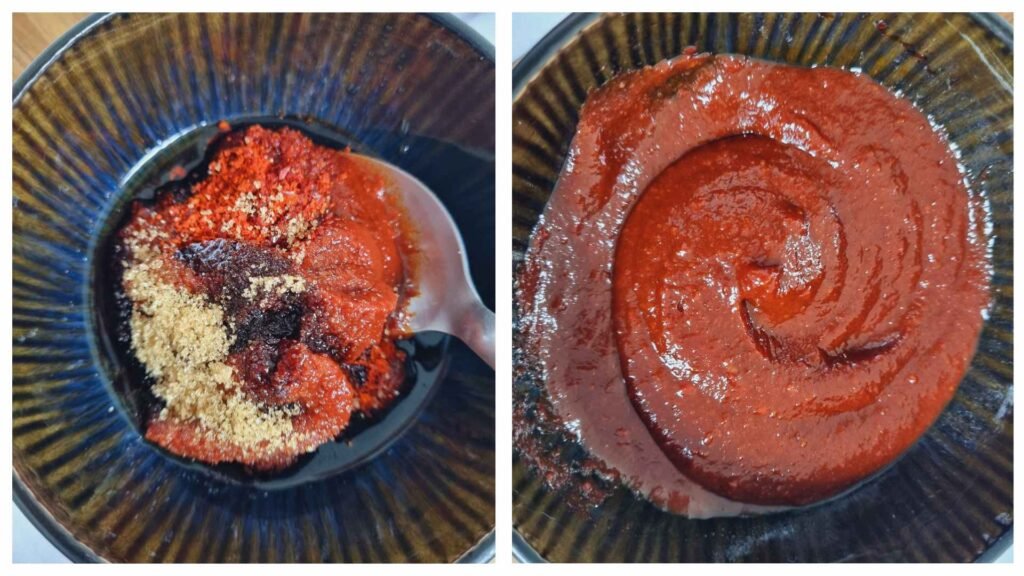
Prepare a bowl to make the tteokbokki sauce. Add gochujang, soy sauce, garlic, gochugaru, fish sauce and tomato paste, and stir to mix. Add the rice cakes to the wok and stir the mixture, and after three minutes, pour the tteokbokkie sauce into the wok.
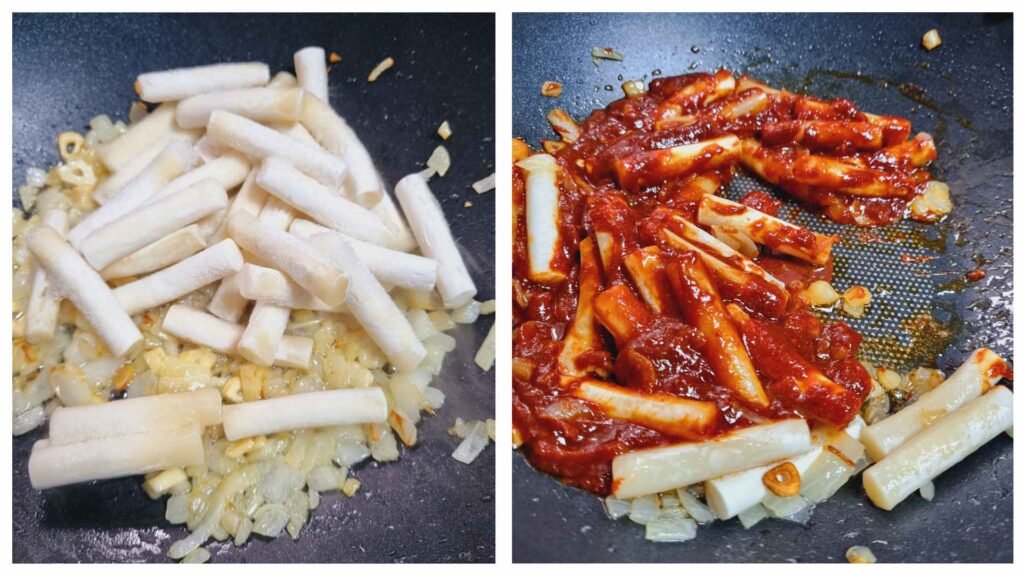
Stir the sauce for five minutes on medium-low heat. Add water to the mixture; it will help to dilute the sauce and reduce the spiciness of the sauce. The tteokbokkie sauce is not overly spicy; on a scale of one to ten, the spice level for this dish would be a five out of ten.
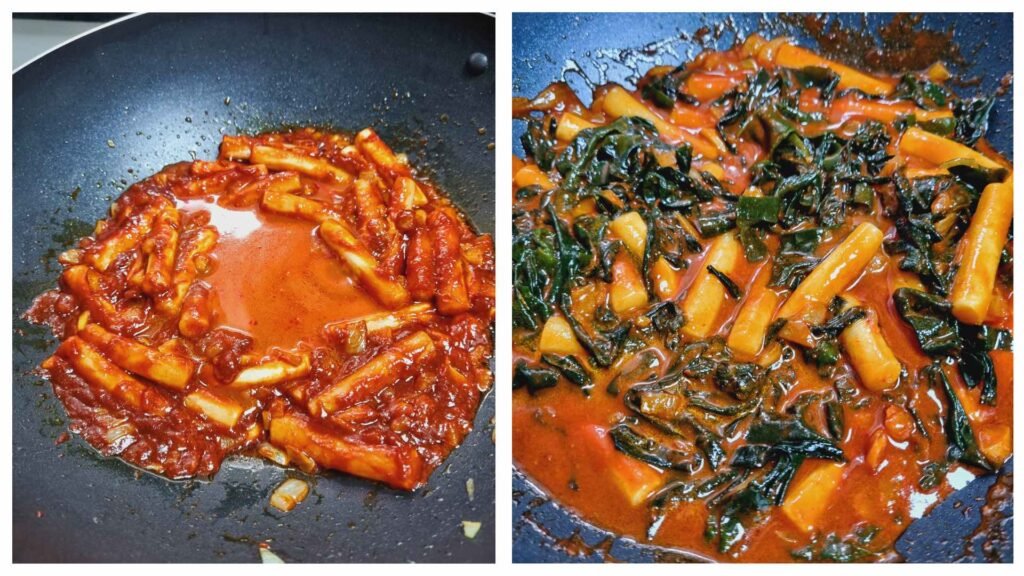
Adjust the temperature to low, add the rice cake and simmer the sauce. Add the peeled boiled eggs and simmer for another five minutes while stirring. Drain out the water of the seaweed and add it to the wok. Stir the ingredients well and let it simmer for a few minutes more.
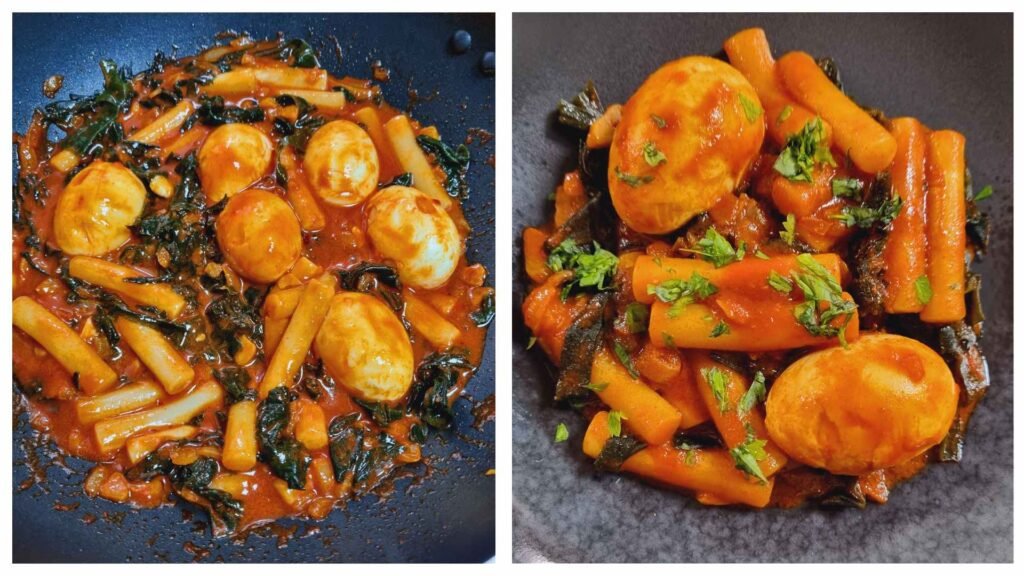
Garnish with sesame seeds and chopped herbs of your preference and serve immediately. Basil and Parsley were finely chopped and serve as an optional garnish in this recipe. Koreans usually use thinly sliced green onions in place of basil and parsley. We chose to use basil and parsley as it enhances the flavour of the tomato paste and works well with the sauce.
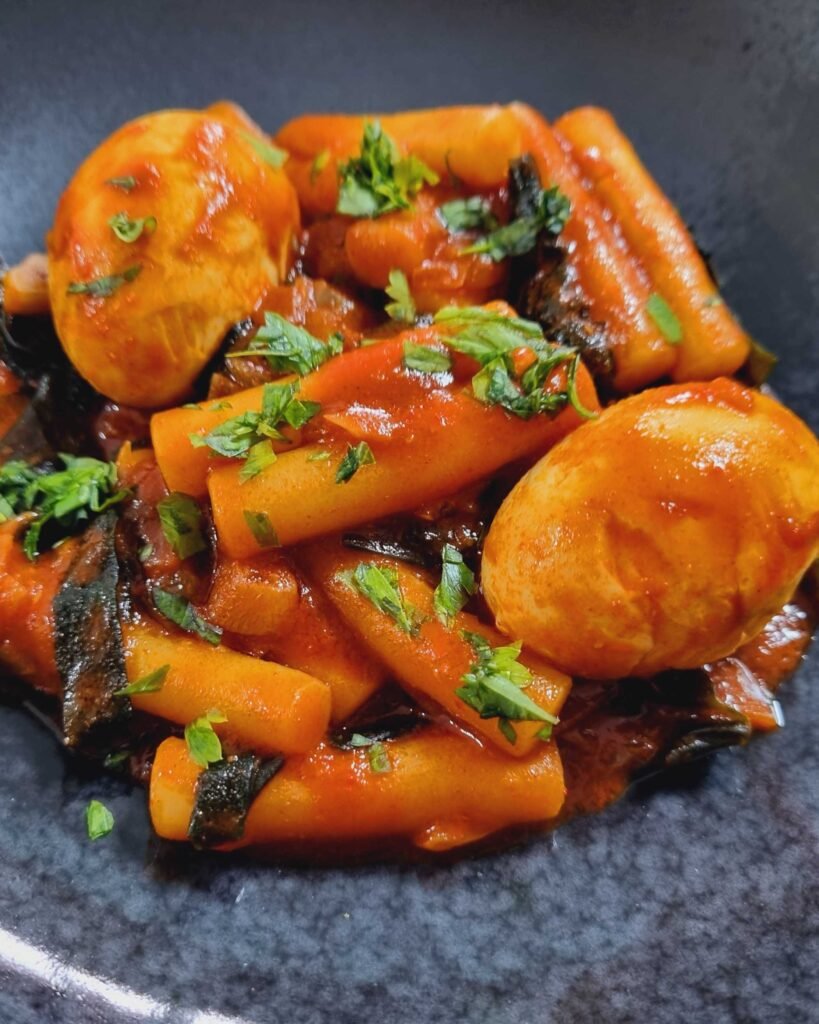
There are various types of Korean rice cakes. To make tteokbokki, you need the elongated white rice cake, which is the special rice cake made for tteokbokki. Make the flavourful broth using the dried anchovy and dried seaweed. Vegetable or chicken broth could work too, but the anchovy broth is best suited for the traditional flavour of tteokbokki. Surprisingly, fish sauce is a convenient substitute and adds a lot more umami flavours to the dish.
The balance between sweet and spicy is important to make the perfect tteokbokki. The authentic taste of tteokbokki is closer to a moderate level of spicy than a sweet flavour. If you are sensitive to spicy flavours, you can reduce the gochuchang sauce by one tablespoon. It is worth noting that the sauce is not as pungent as one would think.
Store the tteokbokki in an airtight container. Allow the temperature to cool down before putting it in the fridge. This will prevent the rice cake from becoming soggy. Tteokbokki can be stored in the fridge for up to three days. Storing the tteok separate from the sauce would be ideal so that the rice cake does not soak up the sauce and become too soft. Tteokbokki can be stored in the deep freeze for up to a month, however, freezing the cooked rice cake can alter the texture when reheated.
Reheat the tteokbokki on the stovetop by adding a touch of water to the sauce. Reheat on low temperature to avoid burning or drying the sauce. Stir gently until the rice cakes are heated. Tteokbokki can also be reheated in the microwave. Make sure to use a dish that is microwave proof, cover the plate with a microwave safe lid. Set the microwave on the appropriate temperature and reheat the tteokbokki without drying the sauce or overcooking the rice cake.
